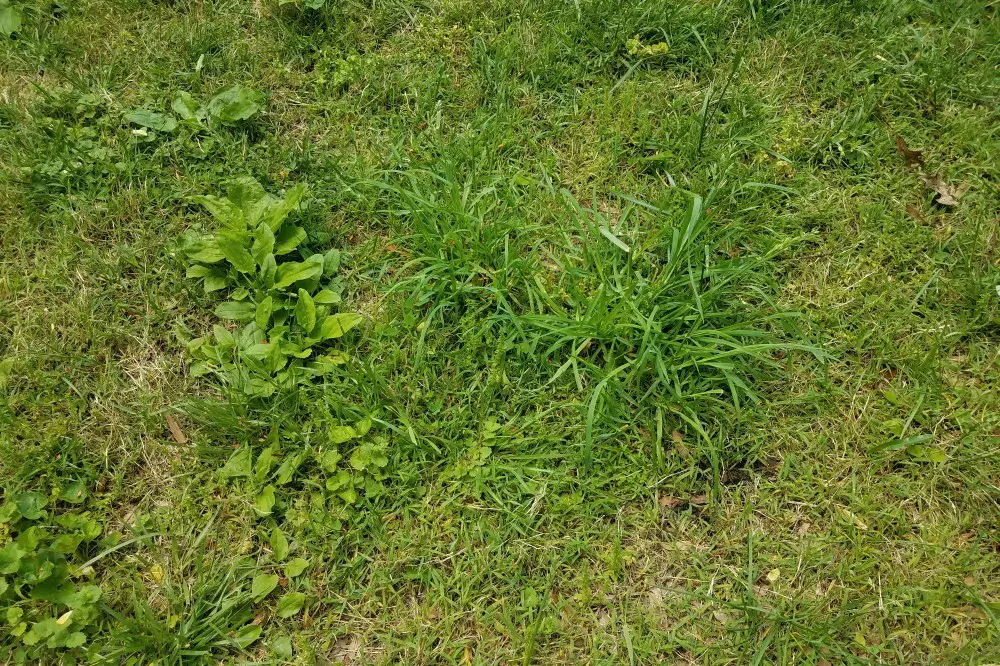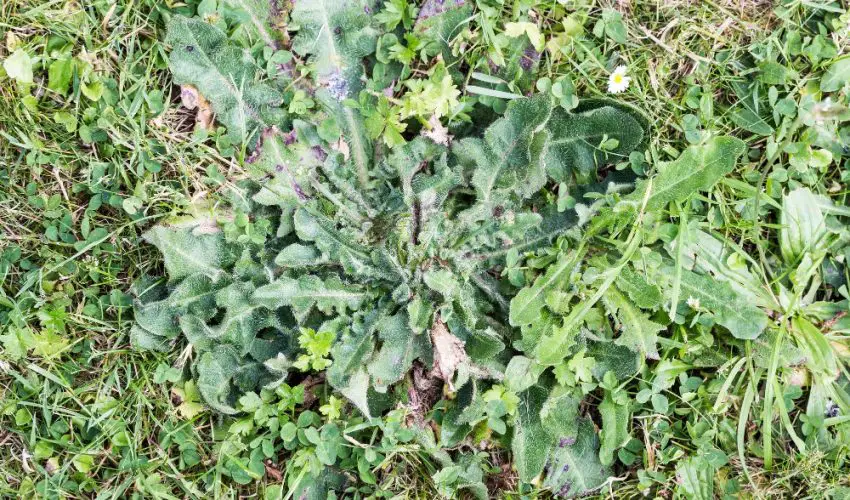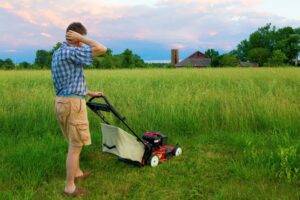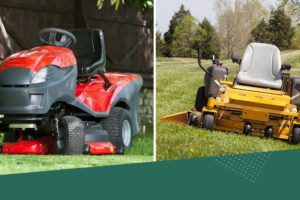While it’s true that weeds can be difficult to control, understanding why they grow in the first place can help you take steps to prevent them from taking over your lawn.
Table of Contents
ToggleHere are six reasons why weeds grow in a lawn.
1. Improper Mowing
One of the main reasons why weeds grow in a lawn is due to improper mowing. When the grass is cut too short it can cause the grass to become stressed. This can lead to a weakened root system, which can make it easier for weeds to invade the lawn.
That why it’s important to mow the grass at the right height. The proper height depends on what type of grass you have in your lawn. For example bermuda grass should be mowed at a height of 1 to 2 inches, while tall fescue should be mowed at a height of 2.5 to 3.5 inches.
By following the right mowing practices you can strengthen your lawn, making it more resistant to weed invasion.
2. Poor Soil Conditions
Weeds can also grow in a lawn due to poor soil conditions. Soil that is compacted, nutrient deficient, or has an incorrect pH level can all contribute to weed growth.
One common cause of poor soil conditions is lack of aeration. When soil becomes compacted, it can prevent air, water, and nutrients from reaching the roots of the grass. This can lead to weak grass that is more susceptible to weed growth. Aeration can help to loosen the soil and improve its ability to absorb water and nutrients.
Another factor that can contribute to poor soil conditions is nutrient deficiency. If the soil lacks essential nutrients like nitrogen, phosphorus, and potassium, it can lead to weak grass and a proliferation of weeds. Regular fertilization can help to replenish these nutrients and promote healthy grass growth.
Lastly make sure to check the pH level of the soil as it can affect weed growth. Grass typically grows best in soil with a pH level between 6.0 and 7.5. If the pH level is too low or too high, it can lead to an imbalance of nutrients and encourage weed growth.
Adding lime to acidic soil or elemental sulfur to alkaline soil can help to adjust the pH level and create a more favorable environment for grass growth.
3. Inadequate Watering
Inadequate watering is another reason why weeds grow in a lawn. Drought conditions, excessive watering, or poor drainage due to soil type are all invitations for weeds. Watering needs vary from lawn to lawn but generally speaking, a deep watering of about one inch once a week in the early morning is best.
When the lawn is not getting enough water, it becomes stressed and weak, which makes it more susceptible to weed growth. Therefore, it is important to ensure that your lawn is getting enough water to thrive. One way to do this is to use an irrigation system that delivers water evenly to all areas of your lawn.
4. Lack of Lawn Care
When a lawn is not properly maintained, it can become weak and thin, making it easier for weeds to take root and grow. Proper lawn care is essential to prevent weed growth and keep your lawn healthy.

In addition to mowing, watering and aerate the lawn regularly, there are a few other thing you can do that can help prevent weed growth.
These include hand weeding, using pre-emergent herbicides and post-emergent herbicides. Hand weeding involves physically removing weeds from the lawn, which can be effective for small infestations.
Pre-emergent herbicides can be used to prevent weed growth before it starts, while post-emergent herbicides can be used to kill weeds that have already sprouted.
5. Lawn diseases and pests
Lawn diseases and pests can significantly contribute to an increase in weed infestation in a lawn. These issues can compromise the health of the grass, creating an environment that is more conducive to weed growth.
Diseases can cause patches of weakened or dead grass, providing open areas where weed seeds can germinate unimpeded. As for pests, they can cause damage to the grass roots or leaves, reducing its capacity to compete with weeds.
6. Improper Use of Herbicides
Herbicides are chemicals used to control weeds, but if not used properly, they can be ineffective or even harmful to the lawn.
When using herbicides, it is important to follow the instructions on the label carefully. The label provides important information on the proper application rate, timing, and method. Failure to follow the label instructions can result in the herbicide being too weak to control the weeds or too strong, damaging the lawn.
It’s also important to use the right weed killer. Different herbicides are formulated to control specific types of weeds, and using the wrong one may not be effective. It is important to identify the type of weed and choose the appropriate herbicide for that weed.





